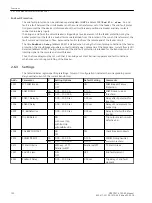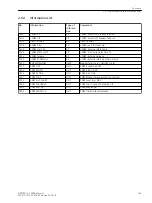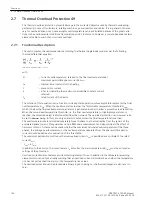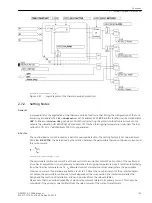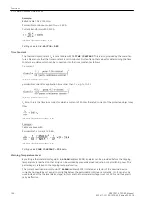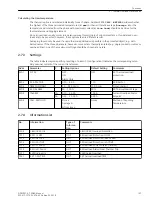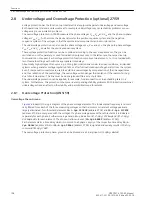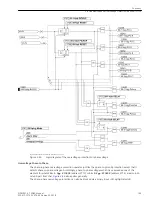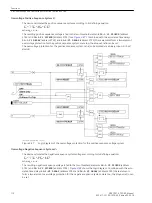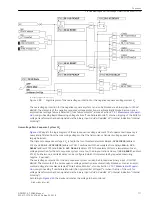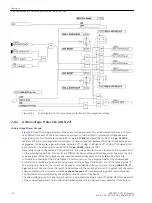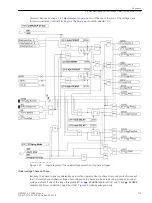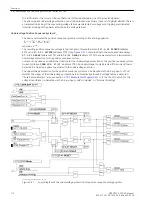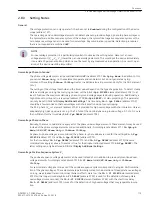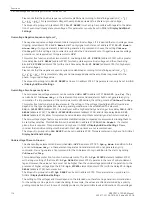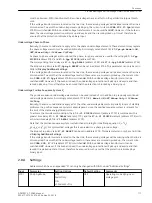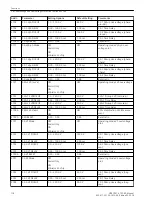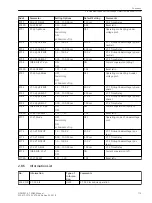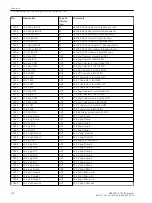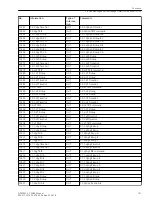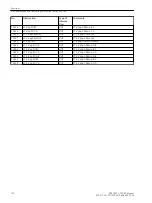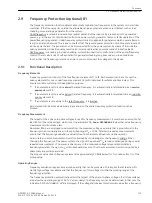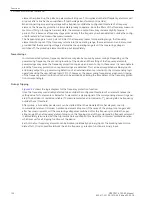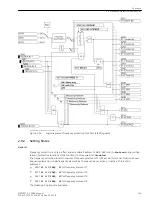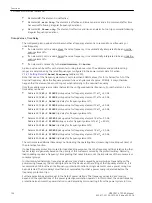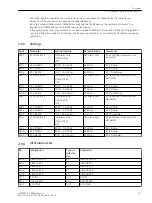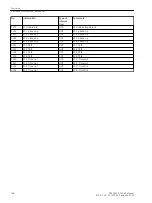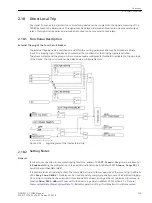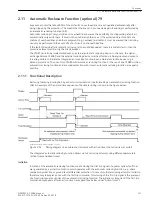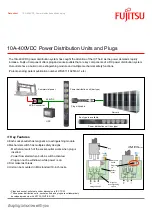
Please note that the positive sequence system is established according to its defining equation V
1
=
1
/
3
·|
V
A
+ a·V
B
+ a
2
·V
C
|. For symmetrical voltages the amplitude equivalent to a phase-to-ground voltage.
The dropout to pickup ratio (address 3739
59-V1 RESET
) is set as high as possible with regard to the detec-
tion of even small steady-state overvoltages. This parameter can only be set in DIGSI at Display Additional
Settings.
Overvoltage Negative Sequence System V
2
The negative sequence voltage elements detect asymmetrical voltages. If it is desired that such voltages cause
tripping, set address 3741
59-V2 Mode
to
ON
. To only signal such states, set address 3741
59-V2 Mode
to
Alarm Only
. If only one element is desired to generate a trip command, choose the setting
V>Alarm
V>>Trip
. With this setting a trip command is output by the 2nd element only. If negative sequence voltage
protection is not required, set this parameter to
OFF
.
This protective function also has two elements, one being
59-1-V2 PICKUP
(address 3742) with a greater
time delay
59-1-V2 DELAY
(address 3743) for steady-state asymmetrical voltages and the other being
59-2-V2 PICKUP
(address 3744) with a short time delay
59-2-V2 DELAY
(address 3745) for high asym-
metrical voltages.
Please note that the negative sequence system is established according to its defining equationV
2
=
1
/
3
·|
V
A
+ a
2
·V
B
+ a·V
C
|. For symmetrical voltages and two swapped phases the amplitude is equivalent to the
phase–to–ground voltage value.
The dropout to pickup ratio
59-V2 RESET
can be set in address 3749. This parameter can only be set in DIGSI
at Display Additional Settings.
Overvoltage Zero Sequence System
The zero sequence voltage elements can be switched
ON
or
OFF
in address 3721
59G-3V0 (or Vx)
. They
can also be set to
Alarm Only
, i.e. these elements operate and send alarms but do not generate any trip
commands. If a trip command of the second element is still desired, the setting must be
V>Alarm V>>Trip
.
This protective function also has two elements. The settings of the voltage threshold and the timer values
depend on the type of application. Here no general guidelines can be established. The element
59G-1-3V0PICKUP
(address 3722) is usually set with a high sensitivity and a longer time delay
59G-1-3V0
DELAY
(address 3723). The
59G-2-3V0PICKUP
element (address 3724) and its time delay
59G-2-3V0
DELAY
(address 3725) allow to implement a second element with less sensitivity and a shorter time delay.
The zero-voltage stages feature a special time stabilization due to repeated measurements allowing them to
be set rather sensitive. This stabilization can be disabled in address 3728
59G-3Vo Stabil.
if a shorter
pickup time is required. This parameter can only be set in DIGSI at Display Additional Settings. Please
consider that sensitive settings combined with short pickup times are not recommended.
The dropout to pickup ratio
59G RESET
can be set in address 3729. This parameter can only be set in DIGSI at
Display Additional Settings.
Undervoltage Phase-to-Ground
The phase voltage elements can be switched
ON
or
OFF
in address 3751
27-Vph-g Mode
. In addition to this,
you can set
Alarm Only
, i.e. these elements operate and send alarms but do not generate any trip
command. You can generate a trip command for the 2nd element only in addition to the alarm by setting
V<Alarm V<<Trip
.
This undervoltage protection function has two elements. The
27-1-Vph PICKUP
element (address 3752)
with a longer setting of the time
27-1-Vph DELAY
(address 3753) operates in the case of minor undervol-
tages. However, the value set here must not be higher than the undervoltage permissible in operation. In the
presence of higher voltage dips, the
27-2-Vph PICKUP
element (address 3754) with the delay
27-2-Vph
DELAY
(address 3755) becomes active.
The dropout to pickup ratio
27-Vph RESET
can be set in address 3759. This parameter can only be set in
DIGSI at Display Additional Settings.
The settings of the voltages and times depend on the intended use; therefore no general recommendations
for the settings can be given. For load shedding, for example, the values are often determined by a priority
grading coordination chart. In case of stability problems, the permissible levels and durations of overvoltages
Functions
2.8 Undervoltage and Overvoltage Protection (optional) 27/59
116
SIPROTEC 4, 7SD80, Manual
E50417-G1100-C474-A2, Edition 02.2018
Summary of Contents for SIPROTEC 4 7SD80
Page 8: ...8 SIPROTEC 4 7SD80 Manual E50417 G1100 C474 A2 Edition 02 2018 ...
Page 10: ...10 SIPROTEC 4 7SD80 Manual E50417 G1100 C474 A2 Edition 02 2018 ...
Page 18: ...18 SIPROTEC 4 7SD80 Manual E50417 G1100 C474 A2 Edition 02 2018 ...
Page 248: ...248 SIPROTEC 4 7SD80 Manual E50417 G1100 C474 A2 Edition 02 2018 ...
Page 298: ...298 SIPROTEC 4 7SD80 Manual E50417 G1100 C474 A2 Edition 02 2018 ...
Page 312: ...312 SIPROTEC 4 7SD80 Manual E50417 G1100 C474 A2 Edition 02 2018 ...
Page 322: ...322 SIPROTEC 4 7SD80 Manual E50417 G1100 C474 A2 Edition 02 2018 ...
Page 400: ...400 SIPROTEC 4 7SD80 Manual E50417 G1100 C474 A2 Edition 02 2018 ...
Page 402: ...402 SIPROTEC 4 7SD80 Manual E50417 G1100 C474 A2 Edition 02 2018 ...

